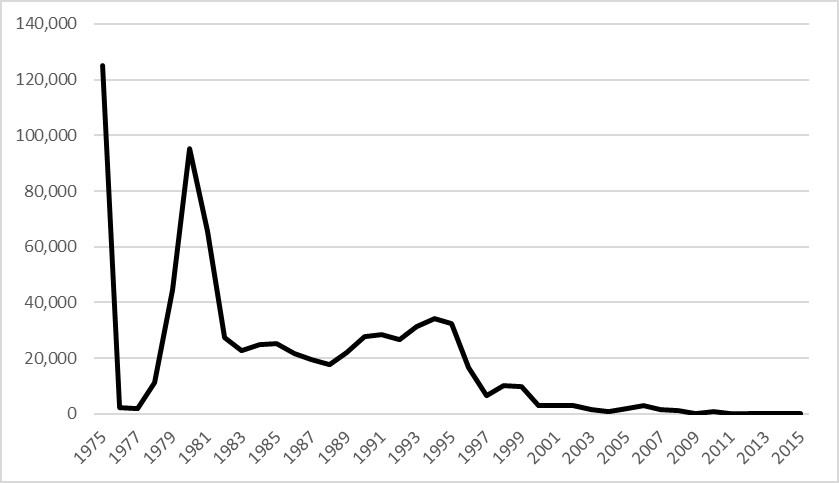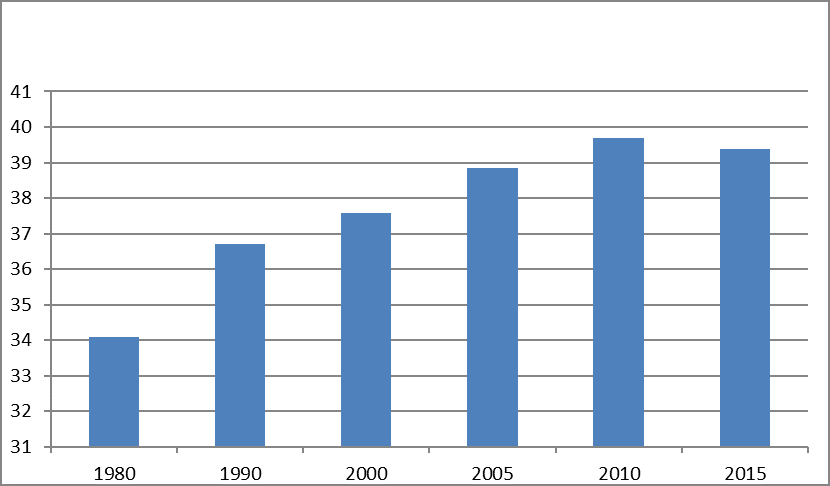Blog
Successfully integrating refugee populations
What can we learn from the experience of Vietnamese Americans?
Policy makers should see integration and upward mobility, and not simply placement and survival, as goals of resettlement of refugees. Our research on the integration of Vietnamese refugees in the United States shows that this population has demonstrated high levels of upward mobility. Drawing on these experiences, a careful and well-organized plan for the reception of involuntary migrant groups—stages of integration—lies at the core of our recommendations. For this, the case of Vietnamese Americans is instructive and produces concrete policy recommendations for the future.
From ‘boat refugees’ to resettlement and successful adaption
Vietnamese Americans have shown high levels of upward mobility since the large-scale global movement of refugees to North America in the 1970s. Research shows that this advancement was brought about by the structure of the refugees’ social networks and resettlement policies that encouraged the development and use of those networks. Subsequent research indicates that the socioeconomic adaptation and upward mobility of members of this group have continued in a favorable direction over the decades, but that these vary according to the social organization of specific Vietnamese communities and available economic opportunities.
Figure 1: Vietnamese refugee admissions to the United States, 1975-2015

As seen in Figure 1, Vietnamese refugee resettlement began with an initial wave immediately following the collapse of South Vietnam in April 1975. However, the exodus of Vietnamese that became known as the ‘boat people crisis’ at the end of the 1970s resulted in an expansion of US refugee policy for the next two decades. More specifically, because of the South-East Asian refugee crisis led the US Congress to pass the most comprehensive piece of refugee legislation in US history, the Refugee Act of 1980.
By the twenty-first century, though, the movement of Vietnamese refugees to the US, as well as other countries, had essentially ended. Although there was some limited non-refugee migration in these later years, even this trickle was closely linked to refugee resettlement because the non-refugee migrants often came through family connections in the US.
When Min Zhou and I published Growing Up American: How Vietnamese Children Adapt to Life in the United States[i] twenty years ago, we found that many Vietnamese children were doing exceptionally well in US schools and we argued that much of their academic performance could be attributed to closely interconnected community networks which provided support and direction. Moreover, these same community networks encouraged ethnic entrepreneurship and opened economic opportunities for group members.
Figure 2: Mean Duncan SEI scores of Vietnamese in the US labor force, 1980-2015

The expectation that the population produced by Vietnamese refugee resettlement in the US would adapt well and achieve upward mobility has proven to be well-founded. Although there was a slight dip in the socioeconomic index scores of Vietnamese between 2010–15 (see Figure 2), in general the trend has shown steady improvement. Vietnamese Americans also have high rates of employment and have utilized their ethnic networks to establish themselves in niche industries, most notably in nail salons and restaurants. For young Vietnamese Americans, the outlook on average is especially bright. By the early 2000s, Vietnamese Americans aged 25–40 had passed white Americans in that age range in college completion rates.
Despite this overall picture of success, though, there are problems and variations in adaptation. Youth crime and gang activities are high in a number of locations. While many Vietnamese Americans have done well, some are struggling economically. Our research indicates that these variations are not simply at the individual level but are due to community-level variations in economic opportunity and network organization and to the interaction between these two factors.
Contrasting Gulf Coast communities – case study
In order to understand the variations among Vietnamese communities, in our WIDER Working Paper, Min Zhou and I have drawn on the literature and on census data to contrast two Gulf Coast Vietnamese American settlements—in New Orleans East, and Biloxi-Gulfport in Mississippi.
Contrasting these two Gulf Coast Vietnamese communities, by drawing on available research literature and on US Census information, Min Zhou and I argue that the socioeconomic mobility of Vietnamese Americans comes essentially from two interconnected kinds of assets: social assets, in the form of interpersonal connections and organizations generated by those connections; and economic assets, in the form of employment opportunities. The Vietnamese of New Orleans were initially resettled in one major neighbourhood, in which they established a strong ethnic community with rich social and economic resources. Others moved there to be with family members and friends. The Vietnamese of the Biloxi-Gulfport area moved there chiefly because there were jobs, and the jobs held them there. While the availability of jobs has been important, the social assets generated by the network connections of the New Orleans Vietnamese have given them a clear edge in adapting to life in the US and in creating a stable basis for upward mobility.
Planning for refugee settlement and mobility – a staged approach
Some of the success of Vietnamese Americans with refugee backgrounds can be attributed to characteristics specific to the Vietnamese, such as ethno-cultural resources and the unique context of reception with a warm political climate and welcoming voluntary agencies at the time of arrival. However, one can draw some broad generalizations for refugee resettlement from the refugee case.
Pre-resettlement – preparing for the future
Preparing involuntary migrants for success in a receiving country must start at the initial places of reception where resettlement agencies operate, whether it is in formal or informal refugee camps. Developing mechanisms that ensure refugees have an active role in service provision and decision-making play a crucial role in preparing people for successful adaptation to a new and strange environment in the future.
Agencies working with refugees should encourage increased self-determination and self-governance. Building on existing social resources is particularly useful and is key for preparing migrants to adapting in a new homeland.
Initial resettlement – the importance of building social networks
Successful resettlement depends on the willingness of countries and communities to accept involuntary migrants and on the quality of agencies supporting resettlement. Careful assessment of recipient community conditions is necessary to understand the realities to which migrants are arriving. Resettlement agencies and recipient governments need to recognize the importance of supporting new arrivals in building and rebuilding their own social networks as this can help them with adapting to a new environment. Furthermore, utilizing social networks can assist people with finding opportunities for example jobs and housing.
Secondary migration is essential to building refugee communities. The government and voluntary agencies of receiving countries cannot and should not completely control the process of resettlement. Existing social networks and views of migrants should be considered in the resettlement process to ensure increased potential for integration.
Finding and supporting ethnic strategies for integration
Although ethnic networks contribute to the adaptation and mobility of group members, through connecting people to opportunities and enabling mutual support and coordination, some rely more on cultural and interpersonal resources than others. In other locations however, an ethnic community may be defined more by the kinds of employment that create or maintain the community.
The work of resettlement agencies involves identifying the kinds of internal and external assets available to newcomers in particular places, helping them recognize their own strengths and challenges, and working on ways to increase different kinds of assets.
In-text reference
Office of Immigration Statistics. (2000–2015) (fiscal years). Yearbooks of Immigration Statistics. Washington, DC: Office of US Department of Homeland Security.
Office of Refugee Resettlement. (1982–2001) (fiscal years). Annual Reports to Congress. Washington, DC: Office of Refugee Resettlement, Administration for Children and Families, US Department of Health and Human Services.
Ruggles, Steven, Katie Genadek, Ronald Goeken, Josian Grover, and Matthew Sobek. (2015). Integrated Public Use Microdata Series: Version 7.0 [dataset]. Minneapolis: University of Minnesota.
Rumbaut, Rubén G. 2000. Vietnamese, Laotian, and Cambodian Americans. In Contemporary Asian America: A Multidisciplinary Reader, edited by Min Zhou and James V. Gatewood, 175– 206. New York: New York University Press.
Zhou, M., and C.L. Bankston (1998). Growing Up American: The Adaptation of Vietnamese Children to American Society. New York: Russell Sage Foundation.
The views expressed in this piece are those of the author(s), and do not necessarily reflect the views of the Institute or the United Nations University, nor the programme/project donors.
 Join the network
Join the network



